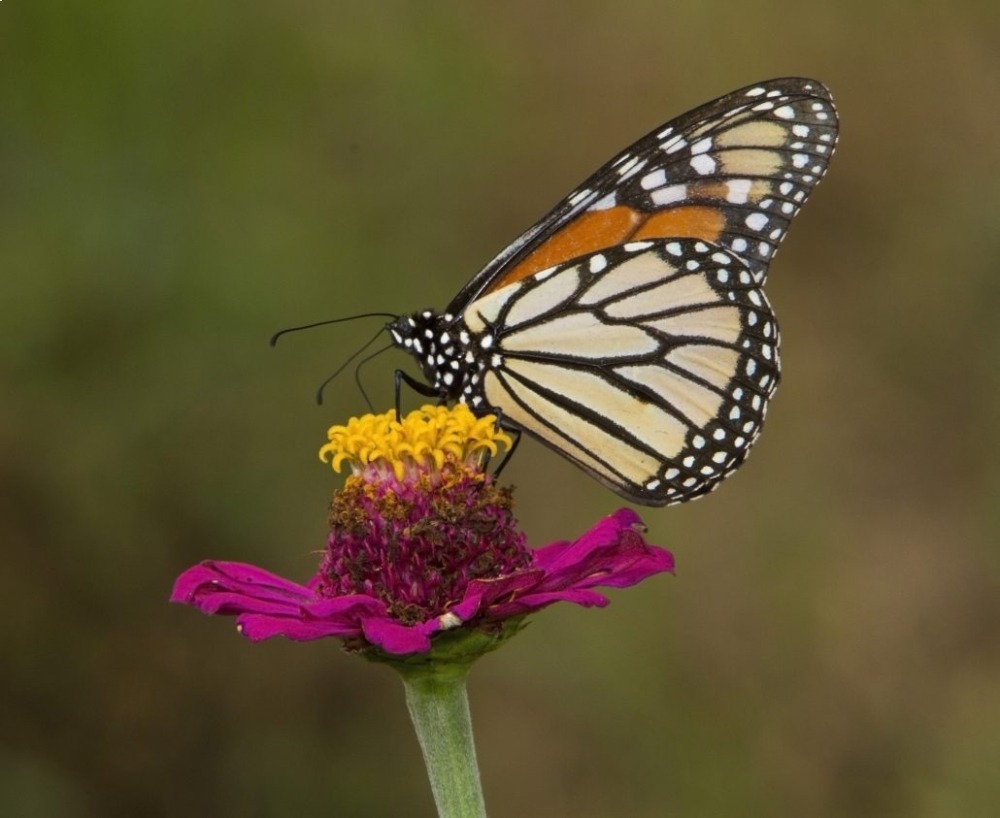The monarch, known for its bold orange coloring, rules as king of the butterflies. However, that reign is in danger of coming to a tragic end.
In 1996, the population of monarch butterflies in North America reached records of one billion. In the past 20 years that number has plummeted 90 percent according to the U.S. Fish and Wildlife Service. Loss of habitat and increased use of pesticides and herbicides are largely to blame.
In an effort to save the monarch, Tennessee Wildlife Federation is banding together with other conservation organizations to help the population of this important species recover.
How can you help? The easiest way is by planting milkweed.
Through the course of history, milkweed has been used as an agent for saving lives. In 1753, Carl Linneaus gave milkweed its name, Asclepias, after the Greek god of healing. Ironically, milkweed may just be what will save the monarch butterfly.
Milkweed plants are the life source for monarch butterflies. Why? Because this species will only lay its eggs on milkweed leaves – not sunflowers, roses, tulips, dandelions or anything else. Milkweed leaves serve as the only food source for monarch caterpillars.
Milkweed is more than just food for the caterpillars; it also serves as their defense mechanism against predators. Milkweed plants are poisonous to livestock and humans if consumed raw and in large quantities. The toxic property of milkweed gives the caterpillars and butterflies a nasty taste, protecting them from predators.
There are many different varieties of milkweed plants and each species is suitable for specific soil conditions so you should be careful when purchasing seeds or seedlings. There are 13 milkweed plants native to Tennessee, butterfly weed, whorled, white, aquatic and sandhill/pinewood milkweed to name a few.
Milkweed seeds can be grown in outdoor beds or in inside flats. According to this article, indoor beds have a higher germination rate.
Spring is generally the best time to plant seedlings, but keep in mind that milkweed seeds can be sown outdoors after the danger of frost has passed.
Asclepias Tuberosa, aka butterfly weed or orange milkweed is a variety that requires little attention.
“Tuberosa is good for urban gardens because it only grows to be about 2 feet tall,” says Debbie Scales, perennials and annuals specialist at Bates Nursery and Garden Center in Nashville.
“It will grow in poor, well-drained soil, is tolerant to droughts, only needs occasional watering once planted, and is deer resistant,” says Scales. “All butterfly weed needs is full sun and you will have a long-lived perennial that will bloom in the summer and potentially grow up to 3-feet tall.”
Scales says to follow a regular watering schedule in the first season to establish a deep, extensive root system.
So get planting! Not only are you helping the monarch survive one milkweed plant at a time, but you will also be aiding other beneficial insects like honeybees because the milkweed flowers are loaded with nectar and pollen. You might even attract some hummingbirds, too.
Good luck and thanks for supporting Tennessee wildlife!
Featured photo by Curt Hart




